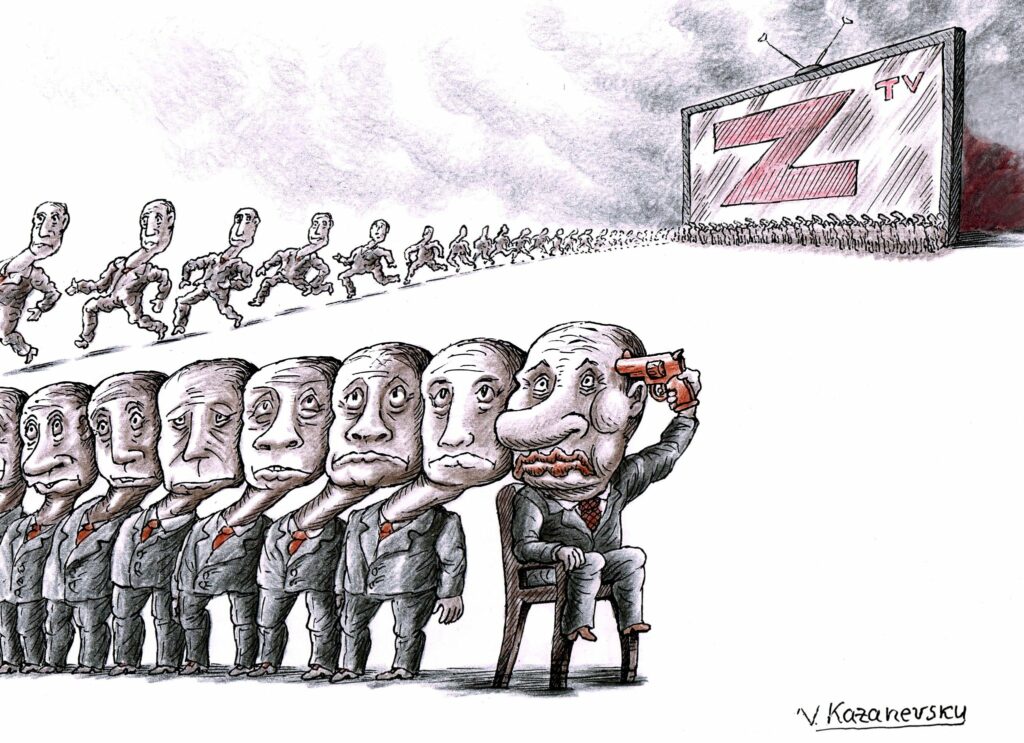Definition of Cartoon: A cartoon is a type of illustration, possibly animated, typically in a non-realistic or semi-realistic style. The specific meaning has evolved over time, but the modern usage usually refers to either: an image or series of images intended for satire, caricature, or humor; or a motion picture that relies on a sequence of illustrations for its animation. Someone who creates cartoons in the first sense is called a cartoonist, and in the second sense, they are usually called an animator.
| Cartoon | |
|---|---|
| Definition | A type of illustration, possibly animated, typically in a non-realistic or semi-realistic style, used for satire, caricature, or humor. |
| Origin | Late 16th century; from Italian “cartone,” from Latin “carta.” |
| Types | Editorial cartoons Comic strips Animated films Webcomics Graphic novels |
| Creators | Cartoonists (static images) and animators (motion pictures). |
| Evolution | From preparatory drawings in the Middle Ages to humorous illustrations in the 19th century and animated films in the early 20th century. |
| Impact | Influences public opinion, shapes cultural attitudes, and provides commentary on current events. |
| Skills Required | Artistic skill, creativity, and technical expertise in composition, storytelling, animation software, and motion graphics. |
| Notable Examples | Editorial cartoons by James Gillray Animated films by Walt Disney Comic strips like “Peanuts” by Charles Schulz |
Origins and Definitions:
The term “cartoon” traces its roots to the Italian word “cartone,” derived from the Latin “carta,” meaning paper or cardboard. Initially, cartoons referred to preparatory drawings for artworks such as paintings, tapestries, and stained-glass windows during the Middle Ages. However, in the 19th century, the meaning of cartoons expanded to include humorous illustrations in magazines and newspapers.
Today, the term “cartoon” encompasses various forms and interpretations. In its simplest form, a cartoon refers to a drawing that humorously exaggerates the features of its subjects, often for satirical or comedic effect. These drawings may appear as standalone images or as part of a narrative sequence, known as a cartoon or comic strip.
Furthermore, cartoons extend beyond static illustrations to include animated films that rely on sequences of drawings for their animation. These animated cartoons, popularized in the early 20th century, have become a beloved form of entertainment, captivating audiences of all ages with their vibrant characters and imaginative storytelling.
Types of Cartoons:
1. Editorial Cartoons: Editorial cartoons, also known as political cartoons, offer scathing commentary on current events, social issues, and political figures. Through clever imagery and witty captions, editorial cartoonists critique and lampoon societal norms and power structures, challenging viewers to reflect on the world around them.
2. Comic Strips: Comic strips, a staple of newspapers and magazines, feature narrative sequences of humorous drawings accompanied by captions or speech balloons. From iconic strips like “Peanuts” by Charles Schulz to modern webcomics, comic strips entertain readers with relatable characters and clever punchlines.
3. Animated Cartoons: Animated cartoons bring drawings to life through the magic of animation. From classic hand-drawn animation to computer-generated imagery (CGI), animated cartoons transport audiences to fantastical worlds and imaginative adventures. Whether in theaters or on television, animated cartoons enchant viewers with creativity and charm.
Grammatical Definition of Cartoon
/kɑːˈtuːn/
Cartoon (noun)
noun: cartoon; plural noun: cartoons
- 1.a simple drawing showing the features of its subjects in a humorously exaggerated way, especially a satirical one in a newspaper or magazine.”the minister faced a welter of hostile headlines and mocking cartoons”synonyms:caricature, parody, lampoon, satire, travesty;
- a narrative sequence of humorous drawings in a comic, magazine, or newspaper, usually with captions.noun: cartoon strip; plural noun: cartoon strips“a Peanuts cartoon by Charles Schulz”synonyms:comic strip, cartoon strip, comic, graphic novel;manga”he could often be found reading cartoons at this time of day”
- a simplified or exaggerated version or interpretation of something.”The parents aren’t the uncaring and cold cartoon villains that often litter these dramas”
- 2.a film using animation techniques to photograph a sequence of drawings rather than real people or objects.”We watched Yogi Bear cartoons on TV”synonyms:animated film, animated cartoon, animation;anime”they watched the Saturday morning cartoons on television”
- 3.a full-size drawing made by an artist as a preliminary design for a painting or other work of art.”The tapestries are based on a set of cartoons commissioned by Pope Leo XI”synonyms:sketch, rough, preliminary drawing, outline, delineation, tracing, artist’s impression
Cartoon (verb)
verb: cartoon; 3rd person present: cartoons; past tense: cartooned; past participle: cartooned; gerund or present participle: cartooning
- 1.make a drawing of (someone) in a simplified or exaggerated way.”she has a face with enough character to be cartooned”
Origin

late 16th century (in cartoon (sense 3 of the noun)): from Italian cartone, from carta, from Latin carta, charta (see card1). Cartoon (sense 1 of the noun) dates from the mid 19th century.
The concept originated in the Middle Ages, and first described a preparatory drawing for a piece of art, such as a painting, fresco, tapestry, or stained-glass window. In the 19th century, beginning in Punch magazine in 1843, cartoon came to refer – ironically at first – to humorous illustrations in magazines and newspapers. In the early 20th century, it began to refer to animated films that resembled print cartoons.

Editorial Cartoon
A political cartoon, an editorial cartoon, is a graphic with caricatures of public figures expressing the artist‘s opinion. An artist who writes and draws such images is an editorial cartoonist. They typically combine artistic skill, hyperbole, and satire to question authority and draw attention to corruption, political violence, and other social ills. Developed in England in the latter part of the 18th century, James Gillray pioneered the political cartoon. However, he and others in the flourishing English industry were sold as individual prints in print shops.
Founded in 1841, the British periodical Punch appropriated the term cartoon to refer to its political cartoons, leading to its widespread use.

Political Cartoon
Political cartoons are like illustrated editorials that serve as visual commentaries on political events. They offer subtle criticism, which is cleverly quoted with humor and satire to the extent that the criticism does not get embittered. The pictorial satire of William Hogarth is regarded as a precursor to the development of political cartoons in 18th-century England. George Townshend produced some of the first overtly political cartoons and caricatures in the 1750s.
The medium began to develop in the latter part of the 18th century under the direction of its great exponents, James Gillray and Thomas Rowlandson, both from London. Gillray explored the use of the medium for lampooning and caricature and has been referred to as the father of the political cartoon.
Creating Cartoons:
Whether crafting a political cartoon or an animated film, creating cartoons requires creativity, technical skill, and a keen understanding of visual storytelling. Editorial cartoonists must navigate the complexities of political satire, distilling complex issues into concise and impactful imagery.
Similarly, animators must possess proficiency in animation techniques, including character design, storyboard development, and digital rendering. Through meticulous attention to detail and artistic expression, cartoonists and animators bring their creations to life, captivating audiences with their unique visions and storytelling prowess.
Evolution of Cartoons:
Over the centuries, cartoons have undergone a remarkable evolution, adapting to technological advancements and shifting cultural landscapes. From the satirical prints of the 18th century to the animated blockbusters of the 21st century, cartoons reflect and influence society’s values, beliefs, and aspirations.
Moreover, cartoons have adapted to embrace diverse voices and perspectives, challenging stereotypes and amplifying marginalized voices in popular culture. From inclusive representation of race, gender, and sexuality to nuanced storytelling that tackles complex themes, cartoons have the power to inspire empathy, provoke thought, and foster understanding.
Conclusion:
In conclusion, cartoons occupy a unique and influential position in visual culture, bridging the worlds of art, entertainment, and social commentary. From their humble origins as preparatory drawings to their modern incarnations as animated masterpieces, cartoons continue to captivate and inspire audiences worldwide.
Whether through satirical caricatures, humorous comic strips, or imaginative animated films, cartoons offer a window into the human experience, inviting us to laugh, reflect, and empathize with the world around us. Celebrating cartoons’ rich diversity and creativity, let us embrace their transformative power to entertain, educate, and inspire future generations.
Cartoon by F Dost Mohamad, Iran
Definitions of Cartoon, Researched and Written by Arifur Rahman
References:
- McCloud, Scott. “Understanding Comics: The Invisible Art.” HarperPerennial, 1994.
- Barrier, Michael. “Hollywood Cartoons: American Animation in Its Golden Age.” Oxford University Press, 1999.
- Wells, Paul. “Understanding Animation.” Routledge, 1998.
Read also
Frequently Asked Questions about Cartoons
1. What is a cartoon?
A cartoon is an illustration, possibly animated, typically in a non-realistic or semi-realistic style. It can be a static image intended for satire, caricature, humor, or a motion picture that relies on a sequence of illustrations for its animation.
2. Who creates cartoons?
Cartoonists and animators create cartoons. Cartoonists specialize in creating static images, often for newspapers, magazines, or online platforms, while animators bring illustrations to life through motion and sound, usually for television, film, or digital media.
3. What is the difference between a cartoonist and an animator?
A cartoonist creates static images, such as editorial cartoons or comic strips, while an animator produces motion pictures, such as animated films or television shows. While both professions require artistic skill and creativity, they involve different techniques and processes.
4. What are the different types of cartoons?
Cartoons encompass various genres and styles, including editorial cartoons, comic strips, animated films, webcomics, and graphic novels. Each type of cartoon serves a different purpose and audience, ranging from political commentary to entertainment for children.
5. How are editorial cartoons created?
Editorial or political cartoons are created by cartoonists who use caricature and satire to comment on current events or social issues. They typically start with a concept or idea and then sketch the illustration, often incorporating symbols or metaphors to convey their message.
6. What is the history of cartoons?
The concept of cartoons dates back to the Middle Ages when they were preparatory drawings for works of art. In the 19th century, cartoons began to refer to humorous illustrations in newspapers and magazines, while in the early 20th century, they evolved into animated films. Over time, cartoons have become an integral part of popular culture, encompassing a wide range of styles and mediums.
7. What skills are required to create cartoons?
Creating cartoons requires artistic skill, creativity, and technical expertise. Cartoonists must understand composition, storytelling, and character design, while animators must be proficient in animation software, motion graphics, and storytelling techniques.
8. How have cartoons evolved?
Cartoons have evolved from simple drawings to dynamic multimedia experiences. Technology advancements have led to innovations in animation techniques, allowing animators to create more sophisticated and immersive narratives. Cartoons’ subject matter and themes have diversified to reflect changing societal norms and cultural trends.
9. What impact do cartoons have on society?
Cartoons significantly impact society, influencing public opinion, shaping cultural attitudes, and providing commentary on current events. Editorial cartoons, in particular, play a crucial role in political discourse by challenging authority and highlighting social issues. Additionally, cartoons serve as entertainment and escapism, bringing joy and laughter to audiences of all ages.
10. Where can I find cartoons to watch or read?
Cartoons are widely available across various platforms, including television, streaming services, newspapers, magazines, and online websites. Whether you’re interested in classic comic strips, animated films, or webcomics, there are countless options to explore and enjoy in cartoons.







4 Comments